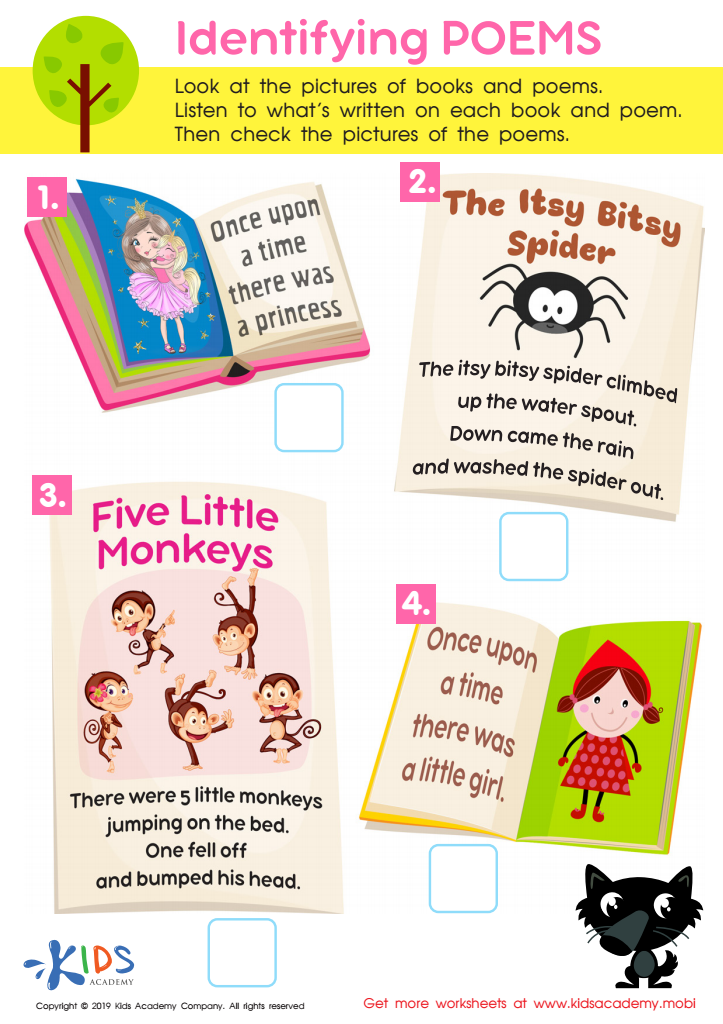Rhyme scheme recognition Worksheets for Kids
1 filtered results
-
From - To


Identifying Poems Worksheet
Question/Answer
How to train the Rhyme scheme recognition skill in Preschool students learning about Reading Fiction?
To train preschool students in rhyme scheme recognition during reading fiction, start by reading rhyming stories aloud, emphasizing rhyming words. Engage students by asking them to listen for and identify rhymes. Incorporate rhyming games and activities, such as matching rhyming cards or creating their own rhyming sentences.
Why is the Rhyme scheme recognition skill important for Preschool students?
Rhyme scheme recognition is important for preschool students because it aids in developing phonemic awareness, a crucial component of early reading skills. It helps children understand how words sound alike, prepares them for decoding and spelling, and enhances memory and language skills. Recognizing rhymes also makes learning fun and engaging, fostering a love for reading and language.
What does the Rhyme scheme recognition skill mean when it comes to Preschool Reading Fiction learning?
The rhyme scheme recognition skill in preschool reading fiction involves the ability of young learners to identify and understand patterns of rhyme within stories or poems. This skill helps children to predict and anticipate words, enhance their phonological awareness, and improves memory and understanding of the text, making reading a more engaging and enjoyable experience.
 Assign to the classroom
Assign to the classroom












